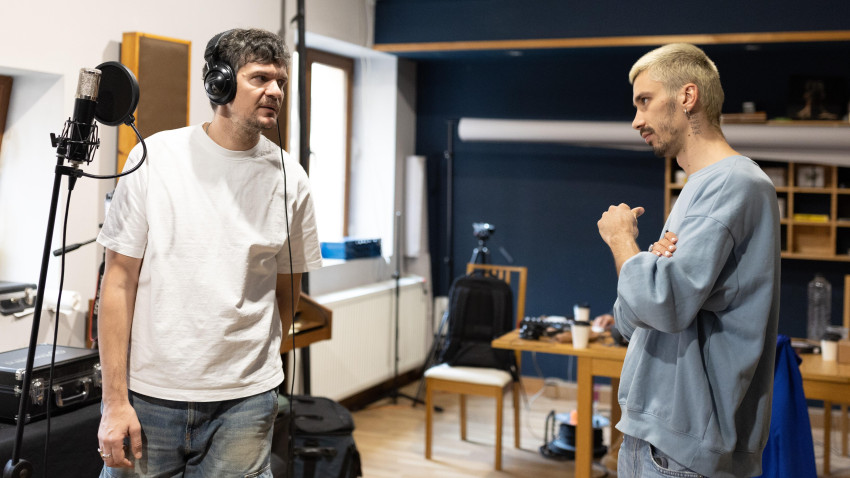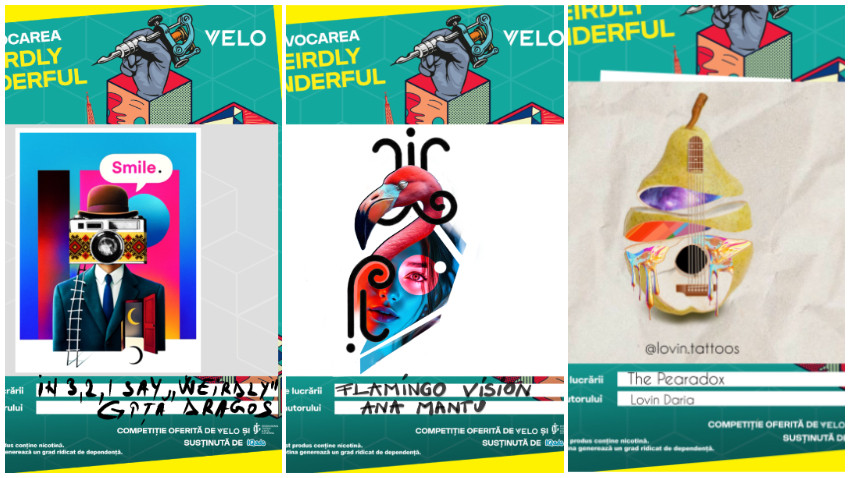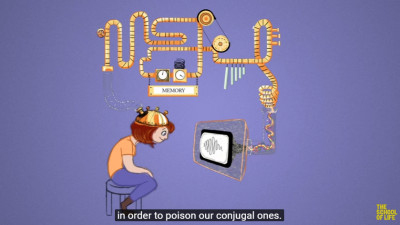Dr Simon Bell is a freelance writer, translator, tutor, educational consultant, book editorial and design consultant.
He taught creative writing and graphic design for more than 20 years at Coventry University and was Deputy Head of School of Art and Design, within the institution.
He has a decades-long experience in the publishing industry and has been working for clients like André Deutsch, BBC, Bloomsbury, Book Creation or British Museum.
His PhD thesis is called ‘The promise of the short text: writing risk into visual arts practice’.
He believes that technology changed the educational paradigm, the good thing being that students can rapidly check the facts, the bad thing being that sometimes students can confuse learning the technology with learning the subject.
Simon thinks that qualities like enthusiasm can be learned, but are hard to teach, because if these kinds of qualities are taught, then they lose their inherent quality:
“By encouraging students to take a risk, you in fact make risk-taking safe by institutionalising it – and it ceases to be a risk.”
The motivations of becoming a teacher
The chance to develop personally, to meet intellectual challenges (part of this being to get further qualifications, because my Masters in English Literature and PhD both stretched me in ways that working in book publishing did not), the chance to work with younger people and to be part of developing ideas.
The profession rewards
The most rewarding parts are: being able to get into topics in depth, and to pursue them into the abstract, if necessary; connecting ideas (e.g. literary theory and visual arts practice); being able to put commercial interests and practical considerations to one side for most of the time; research, and working with fellow academics, both in the UK and overseas – my conference papers and publications have taken me across Europe and into the United States; the opportunity to develop courses and to teach outside the UK, including China, India and Brazil.
Teaching works in two ways because if I keep an open mind I realise I can learn from my students and from the teaching experience, and this feeds into my own practice and my research. I’m not necessarily cleverer than my students: I’m just older and more experienced.
Favourite moments as a teacher
Getting students interested in areas they had not considered interesting; working with apparently unmotivated students to find out what gets them going and to motivate them; to make them enthusiastic about learning to learn; realising that learning to learn is the most important: learning is open-ended, and expertise without the ability or urge to learn leads to stasis, and connecting student learning with my own areas of research and publication.
Principles in teaching
Treat students with respect; remember that teaching is about students learning and not about lecturers demonstrating their knowledge; be open-minded and receptive to new ideas; be ready to entertain alternative ways of thinking; teach students to learn and to think; be prepared; be on time; do not confuse effort with results; do not answer emails late at night or at weekends.
Style of teaching
Keeping to time, being lively, being unafraid of surprises, ready to digress (but always with purpose – it sounds impossible, but it’s not), being honest and being well dressed and well turned out - it’s a privilege to teach, and lecturers should always remember this.
Students and technology
There are good and bad sides to this. On the good side, students can check facts almost immediately, and frequently do so; many lecturers don’t like this, but I like it because it means that teachers have to be more prepared to go to the heart and critical dimensions of any issue as opposed to just dispensing factual information. This chimes with my principles in teaching;
On the other hand, I can check facts immediately as well, and if the teaching session goes to unexpected but potentially productive places, then to be able to show a video or some images from the internet right away is really excellent – and students can do this too in creative pedagogical practice.
On the bad side, in some subjects (design being a good example) students sometimes confuse learning the technology with learning the subject, and some employers do as well. This can mean that the work students produce can seem repetitive and similar at times.
Teachers need to understand that technology is important but it has its place, and that students do not come to university to learn what they could learn at home in training videos;
Creative visual language is the goal – and technology plays its part, but so does an unexpected idea that comes when you are on the bus; digital technology for lecture displays and other teaching modes can also lead to repetitive presentations and endless images with much too much text on them – an over-reliance on such technologies means that many lecturers do not think enough about their teaching delivery.
What do you love about your students?
Inquisitiveness, willingness to try things out, no fear of mistakes, enthusiasm, being natural and rejoicing in their youth and the life in front of them.
Design as a skill
A good eye and a clear mind are often natural. Enthusiasm and adventurousness can be learned but are hard to teach – they can be taught by example, but in a way if these kinds of qualities are taught then they lose their inherent quality. For example, by encouraging students to take a risk, you in fact make risk-taking safe by institutionalising it – and it ceases to be a risk.
Much of design (and other creative activities, such as writing, fashion, fine art etc.) teaching is like being a gardener – you prepare the ground, you choose the season and the time, you decide when the plants go in and the extent to which they should be fed and cut back ... and they grow. The question of who did what is hard to answer – and that’s part of what makes teaching so fascinating and so rewarding.
The role of arts and design school nowadays
To foster questioning of accepted norms, and to be able to answer such questioning – this is, in my view, the primary aim.
Anyone can learn the technology, and skill can be taught, so a critical mind has to apply the technology and skills wisely and creatively. An art school has to provide a fertile environment (I refer you back to the gardening metaphor, above), and to be sure that students meet the right people at the right time.
The human skills needed in setting up and maintaining a creative buzz in an art school by choosing the right staff, by keeping group dynamics functioning, by timing individual sessions, by mixing teaching methods intelligently, cannot be overstated.
Good design
It makes you think and changes your outlook on life. Design is essentially a human business – if you’re not interested in human behaviour then you will probably not become an interesting designer (but you could be a skilful one!). Psychology should be taught properly in art schools – it’s an underlying discipline, and most art school lecturers recognise it but are not qualified to teach it.
Design Thinking
I think that it’s a fascinating principle, but like many principles set out as principles it risks appearing aspirational and dogmatic, and this can put people off. To a certain extent, it’s presented the wrong way round – it might be interesting to try ‘reverse-engineering’ an outcome so that the principles are self-evident, rather than having them front-loaded.
This may appear critical, but it’s not meant to be – I’m happy with what is done, but I’m not sure it’s explained correctly, and, as I said above, this can be demotivating because it seems obvious. One would expect a business to be ‘passionate’ and ‘honest’ and ‘reliable’, for example – in the same way that design agencies usually brand themselves as ‘creative’ agencies ... surely that’s in the DNA?
The thinking principles and the intellectual underpinning in this are excellent and robust, however.
Creativity
The ability to bring together things which are usually considered mutually exclusive - so, for example, managing to persuade smart and successful young business people that it’s not bad for their image to be seen travelling by tram.
Creative writing
The match of content and intent; a love of language; a love of reading; a solitary mind married to an unfailing interest in human spirit and behaviour.
PhD thesis ‘The promise of the short text: writing risk into visual arts practice’
My background in book publishing and literature meant that I was soon overseeing the majority of the writing projects of my students, at all levels from Foundation right through to doctoral level. Art and design students generally view writing with a mix of respect and dislike, but often found the process rewarding if disconnected from their studio work, and these were a driver for me.
I experimented with very short and tightly formatted formal essays; to do these, the students had to risk breaking rules and conventions, but with good reason: they had something they really wanted to say but were (deliberately) frustrated by the format, so took the risk to break boundaries.
The trick with anything radical in pedagogical practice is to let the benefits bleed into other projects, and this is where the experience and the abstracted notion of risk played a part. The main theoretical framework of my study was the short story as well as flash- and micro-fiction, with their emphases on format, suggestion and words repeated and multitasking, and reader-response theory with its emphasis on the reader as part of the authoring process, and thus by inference the author devolving some responsibility for meaning.
The publishing industry
In some ways it has changed a great deal, in other ways not at all, and publishers vary too much to be able to generalise intelligently.
Many publishers continue in much the same way as they have always done, others make cosmetic changes to their titles and others use different imprints to sell different types of books, so publishers’ identities are more complex than before.
With digital printing a lot has changed in that someone can be more easily published nowadays, because the print-run can be much shorter, and print-on-demand has meant that the old equations about unit cost, distribution and break-even points on print runs are less critical for many authors – the risk is diminished, and less money is needed upfront.
A down side of this is that more people can be published and therefore the likelihood of bad quality titles emerging is greater. Traditional publishing always had a good system of filtering out bad quality, but, like with the internet, not everyone observes such systems.
E books have not killed off paper books, but they have provided more reasons for, and a more eager market for, beautifully produced books as a contrast and alternative to e books. This is a gorgeous area for designers now to focus.
I believe that the opportunities for both print and electronic versions of the same texts have not yet been exploited enough. Many electronic books, and magazines in particular, could be fantastic partners rather than identical twins. Why have a PDF of the text version?
In a fashion magazine, for example, why not have an electronic version with roll-overs and live hot links, coming out monthly or weekly, and a beautiful print-version with differently configured but related content coming out every season? It makes economic sense as well because it’s creating two markets and two opportunities to generate loyalty.

























